Resistance and Power: The Street Art of Lebanon
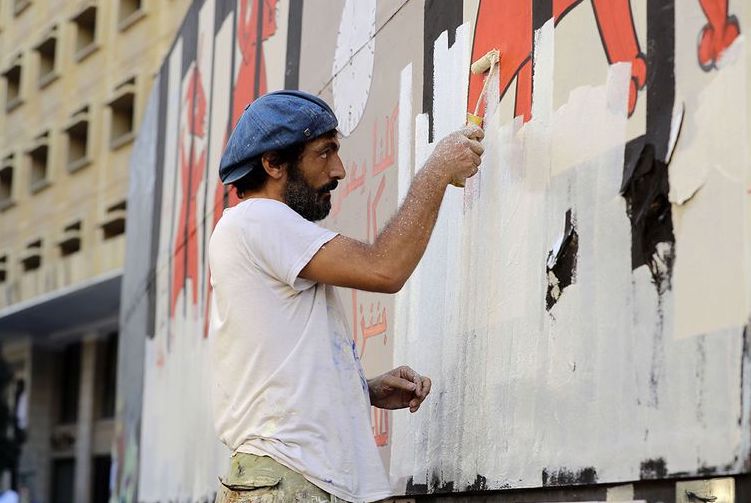
By: Dina Kobeissi / Arab America Contributing Writer
Lebanon has experienced an immense amount of hardship, especially in recent years. A port explosion, economic collapse, and political instability have ravaged the country. In response to adversity, Lebanese individuals in Lebanon and the diaspora have expressed themselves— their feelings, hopes, and vision for change— in various ways. Today, we take a closer look at what street art can reveal about the Lebanese response to crises. Here, I share real examples of Lebanese street art, some of which were taken by myself and friends while visiting Lebanon in the past few years. What can this art tell us about the state of Lebanon and the Lebanese people, both then and now? How has street art served as a voice for the Lebanese struggle?
Street art in Lebanon has become an entire movement; graffiti, paintings and murals have become a powerful tool in the fight against corruption, inequality, high unemployment and increasing poverty. Founded in May 2019, Art of Change is one of the organizations at the forefront of the Lebanese street art movement in Lebanon. “If Street Art had any purpose in this revolution it was to be the voice of the disenfranchised. A social commentary of the Revolution as it unfolded.” The art documents what happens; it’s a reminder to the people of why we went down to the street and to the politicians that we were here and still are here.
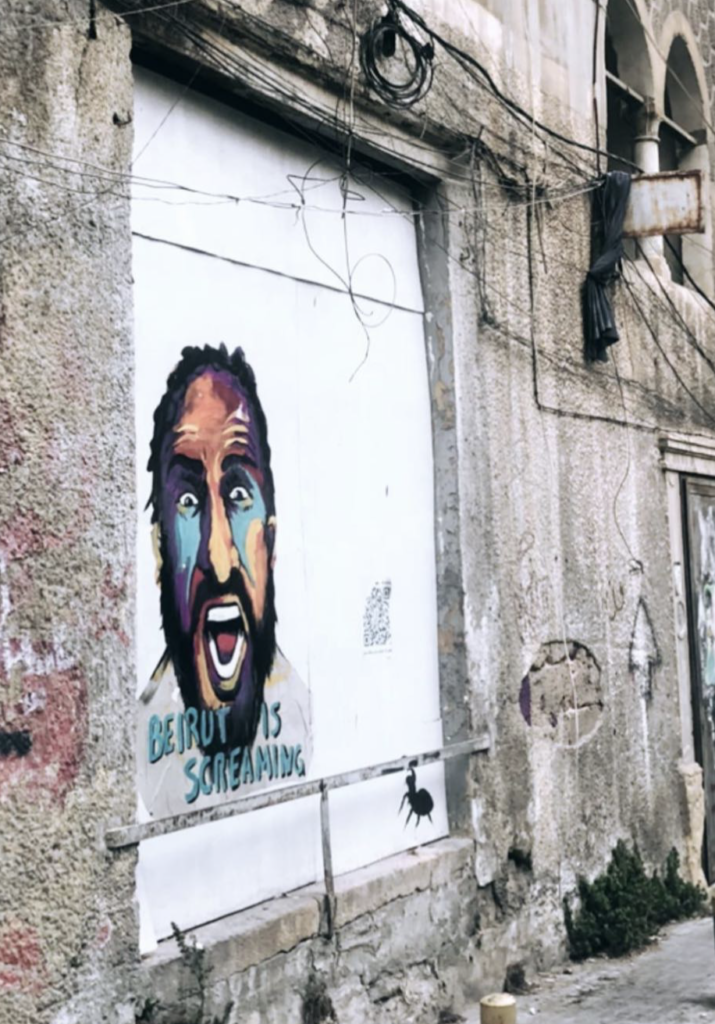
On August 4, 2020, an explosion at the Port of Beirut led to 232 deaths, 7,000 injuries, $15 billion in property damage, and left an estimated 300,000 people homeless. The explosion devastated the entire country. Lebanese within and outside of Lebanon felt shock, pain, anger, and perhaps even hopelessness, as Lebanon’s issues were already so heavy, already seeming on the verge of unbearability. However, inaction by politicians preceding and in the wake of the explosion also revealed the immense love and unity that we know can exist. Lebanon had to overcome, and we had to recognize that support for one another was the only way we could move forward. The lives lost mattered. Each and every family member, friend, colleague, cousin mattered and continues to matter. Street art was and continues to be a tool for resisting forgetfulness, serving as a reminder to us and everyone of the pain that once brought us together.
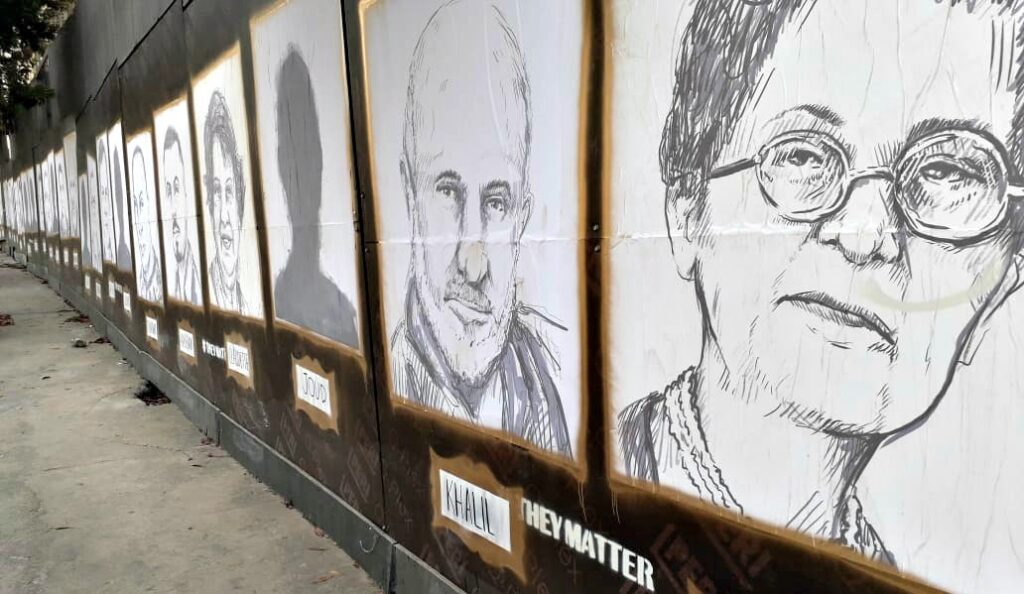
Following the explosion, a portrait of each victim was put up across from Beirut’s famed Martyrs Square. “Families were protesting, holding up pictures of their relatives as they demanded justice” and so an American street artist resident in Lebanon, Brady Black, teamed up with Art of Change to illegally create the capital city’s largest informal portrait gallery. “They wanted them to be seen. So we made it loud.”
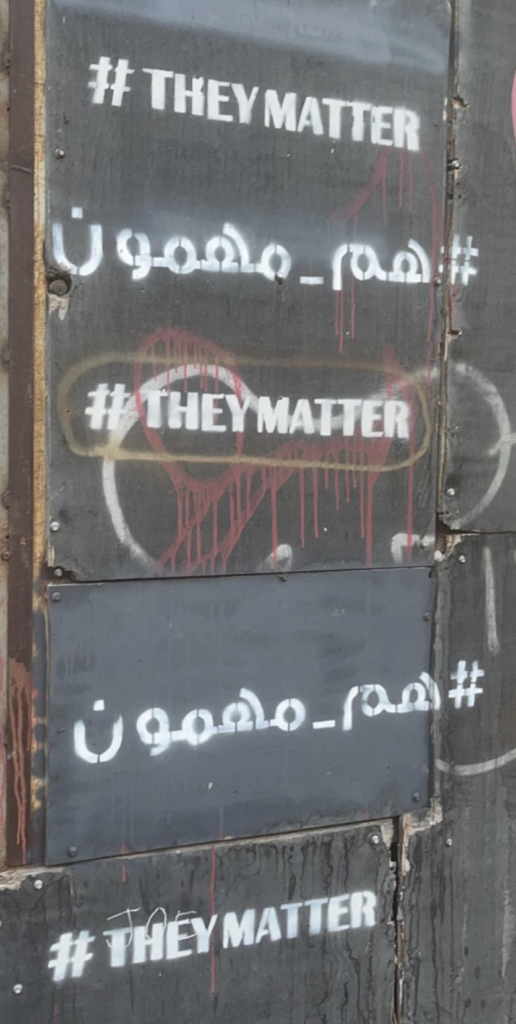
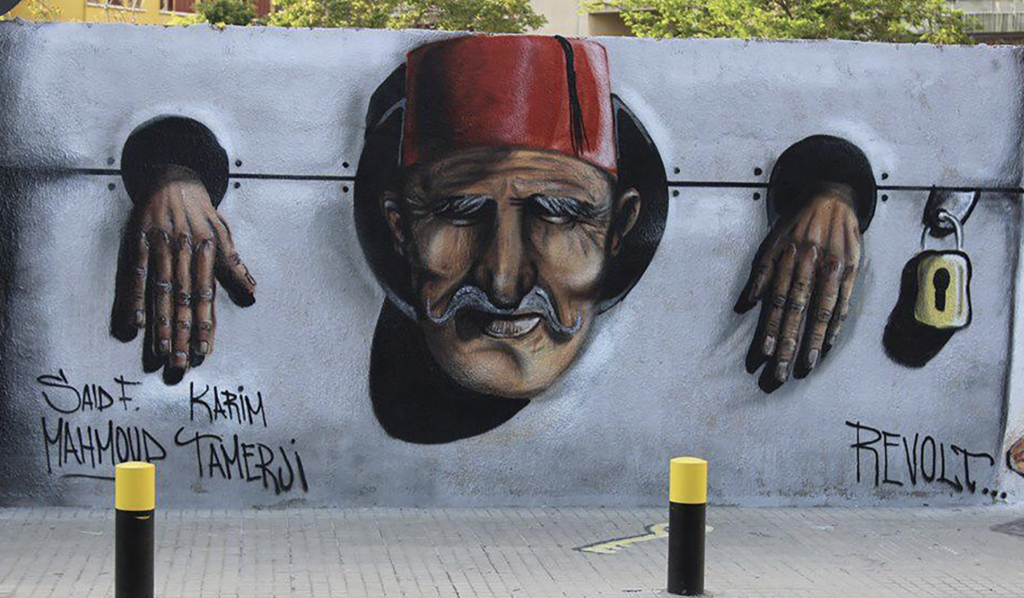
Being chained to religious and political status has plagued Lebanon for centuries and fueled division in the country. Works such as “Change What the Elders Couldn’t” reveal a call for a braking of the shackles of the past normalcy of segmentation. We must do what past generations could not. Despite Lebanon’s salient divisions, many prominent graffiti artists have avoided focusing on a specific religious message, or showing support for a specific sect or party. This in itself is a form of resistance, and a tangible image for change in Lebanese society and politics.
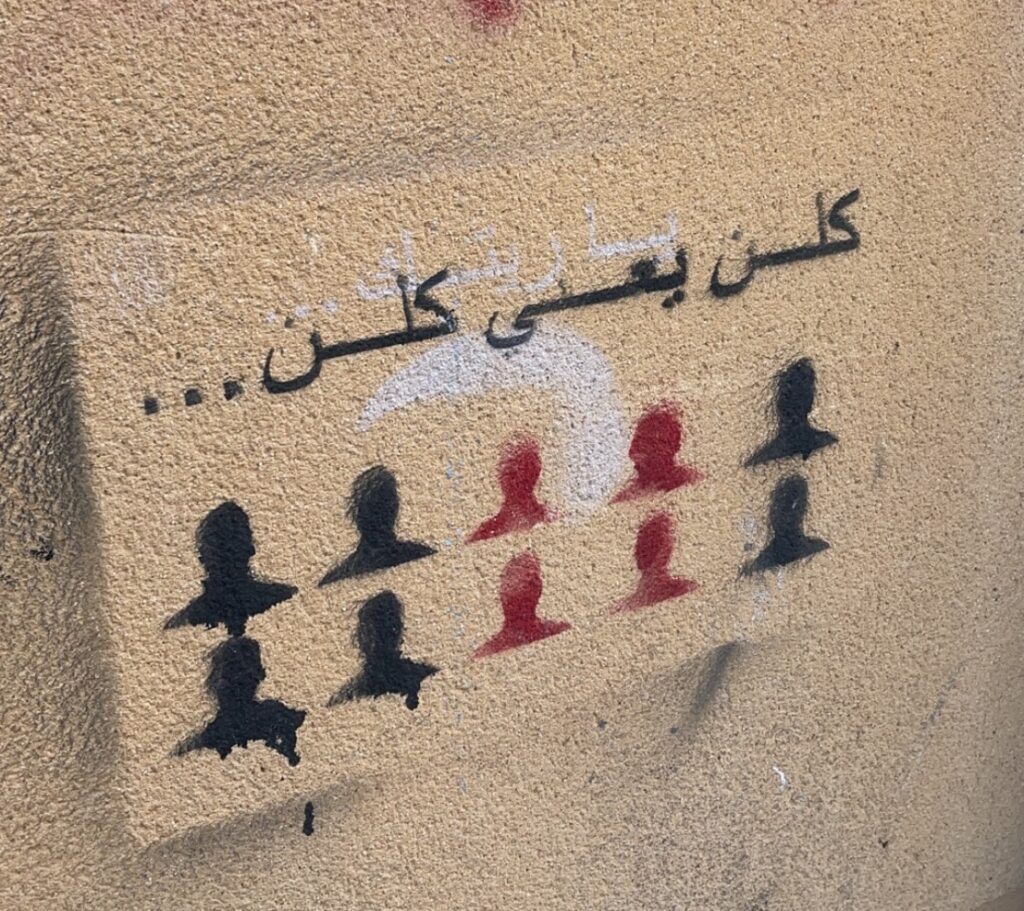
“Kellon Yane Kellon” translates to “all of them means all of them.” This was a popular phrase used by Lebanese protesters to emphasize the complicity of all political leadership in Lebanon’s corruption. It further emphasizes the push for a united front that breaks down the barriers of division in Lebanese society which has only fueled tensions and strengthened the failing political system.
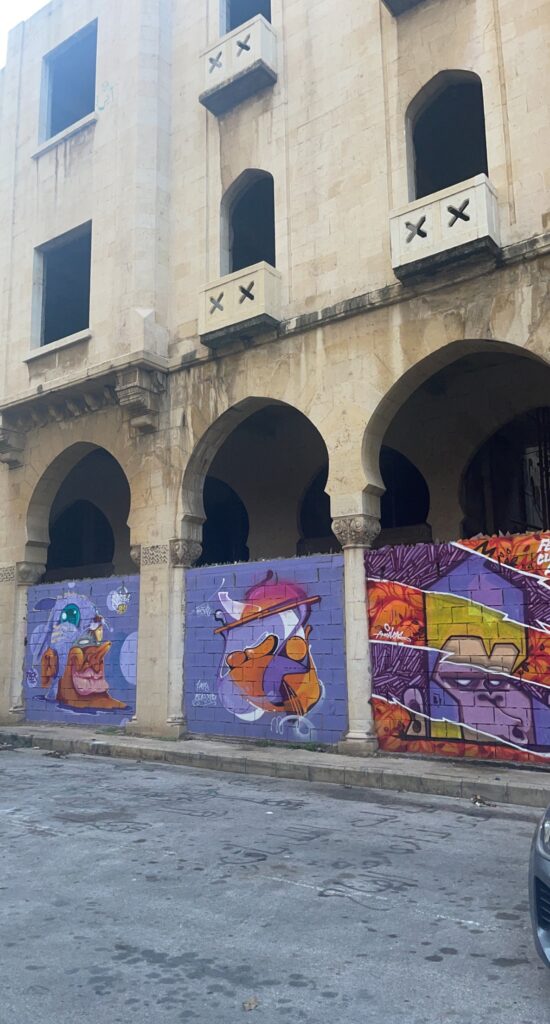
This art is perhaps most notable because of its location rather than content. Not blatantly political, I saw this art on the abandoned Opera house in Beirut- a building I had never payed attention to in my almost 20 years of life, visiting Beirut almost every summer. But, the bright colors immediately captured my attention, and I snapped a photo to ask my grandfather about it later. I now know the history of this building; I now know what used to exist here, and it’s all because of street art. Left to crumble after the 1975 to 1990 Lebanese civil war, the theater was largely forgotten until the October 2019 protestors tore down the fences sealing the building away and stormed in to reclaim the once public space. Let this serve as a testament to the Lebanese reclaiming of public spaces. “Now people who were not born when the war ended almost 30 years ago were seeing a city they had never felt part of. We didn’t realize what was being kept from us.” (Source: Aljazeera)
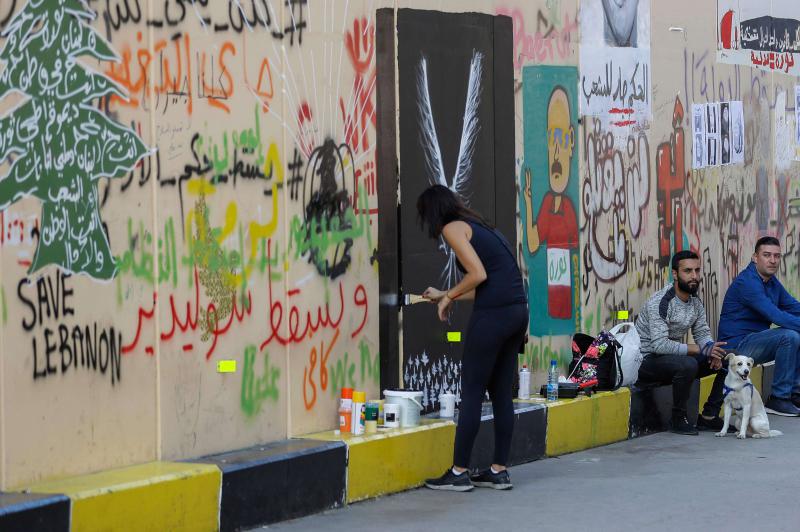
Art has always revealed much about history—a nation’s people, politics, and culture. Lebanese street art is no exception. “Art of Thawra” founder Paola Mounla reminds us that “These pieces will exist forever. They capture key moments and events, forever immortalized in the artwork. They can be used in schools and in books and go down in history as part of the Lebanon 2019 revolution.” If you are lucky enough to visit Lebanon, don’t miss the opportunity to take time to recognize and sit with the street art across the country— it’ll be hard to miss it anyway. I look forward to the day we paint murals in celebration of Lebanon’s perseverance past these times, to a better and brighter future for Lebanon always and forever.








